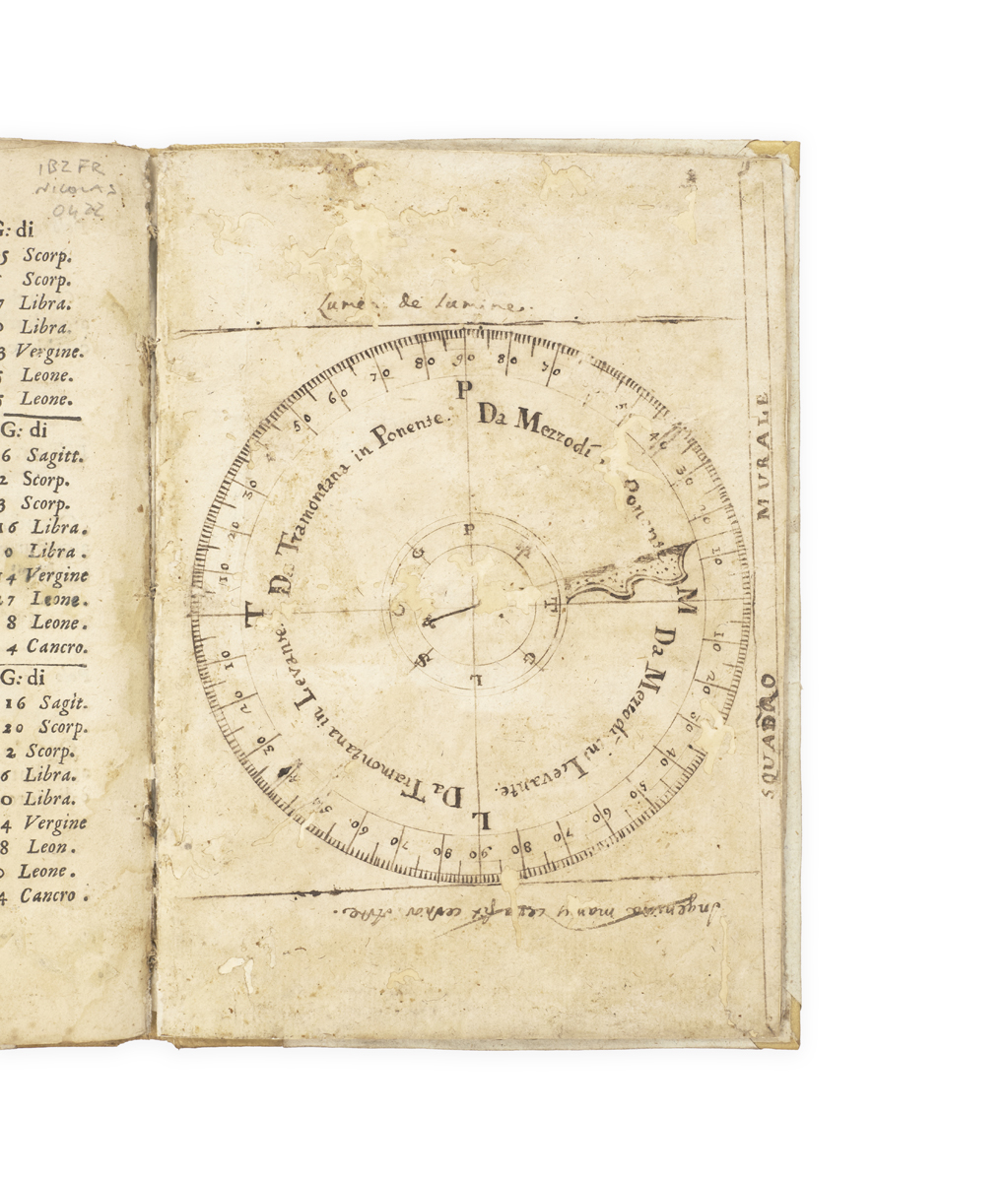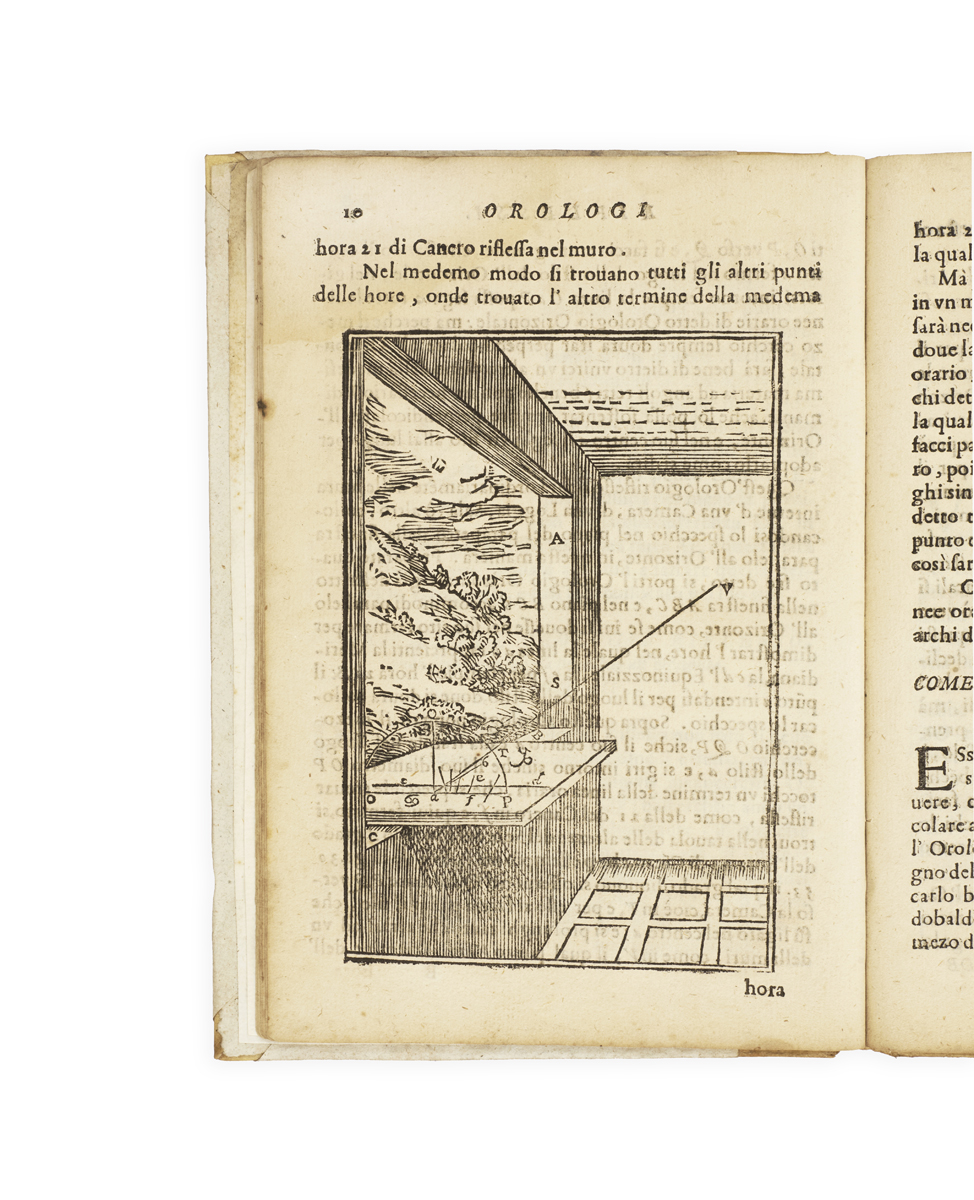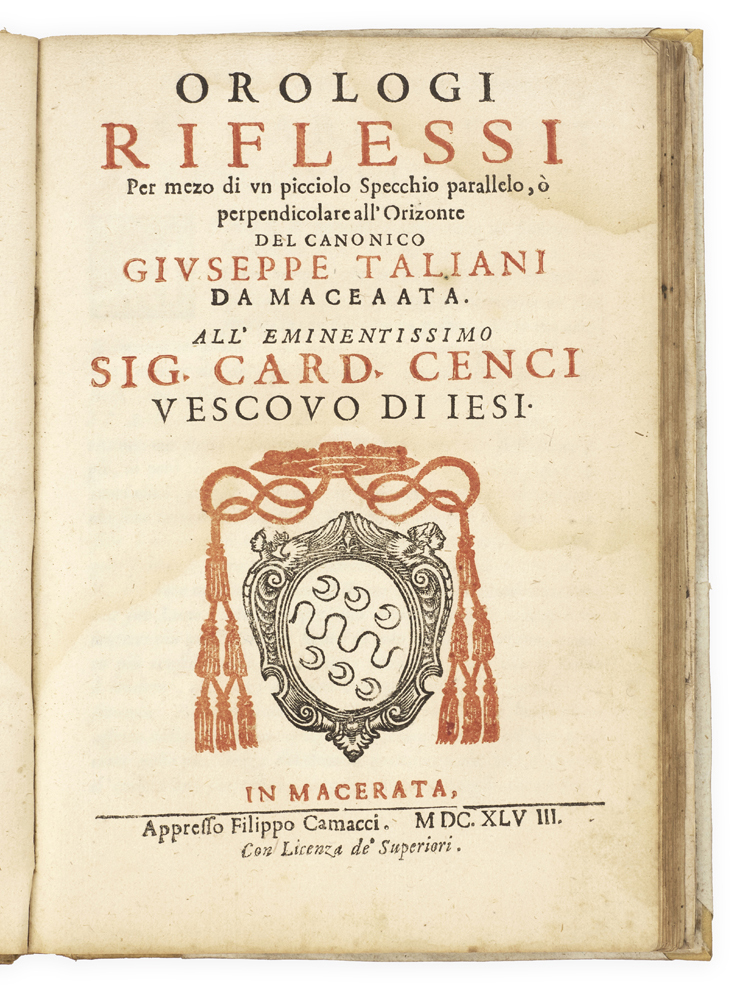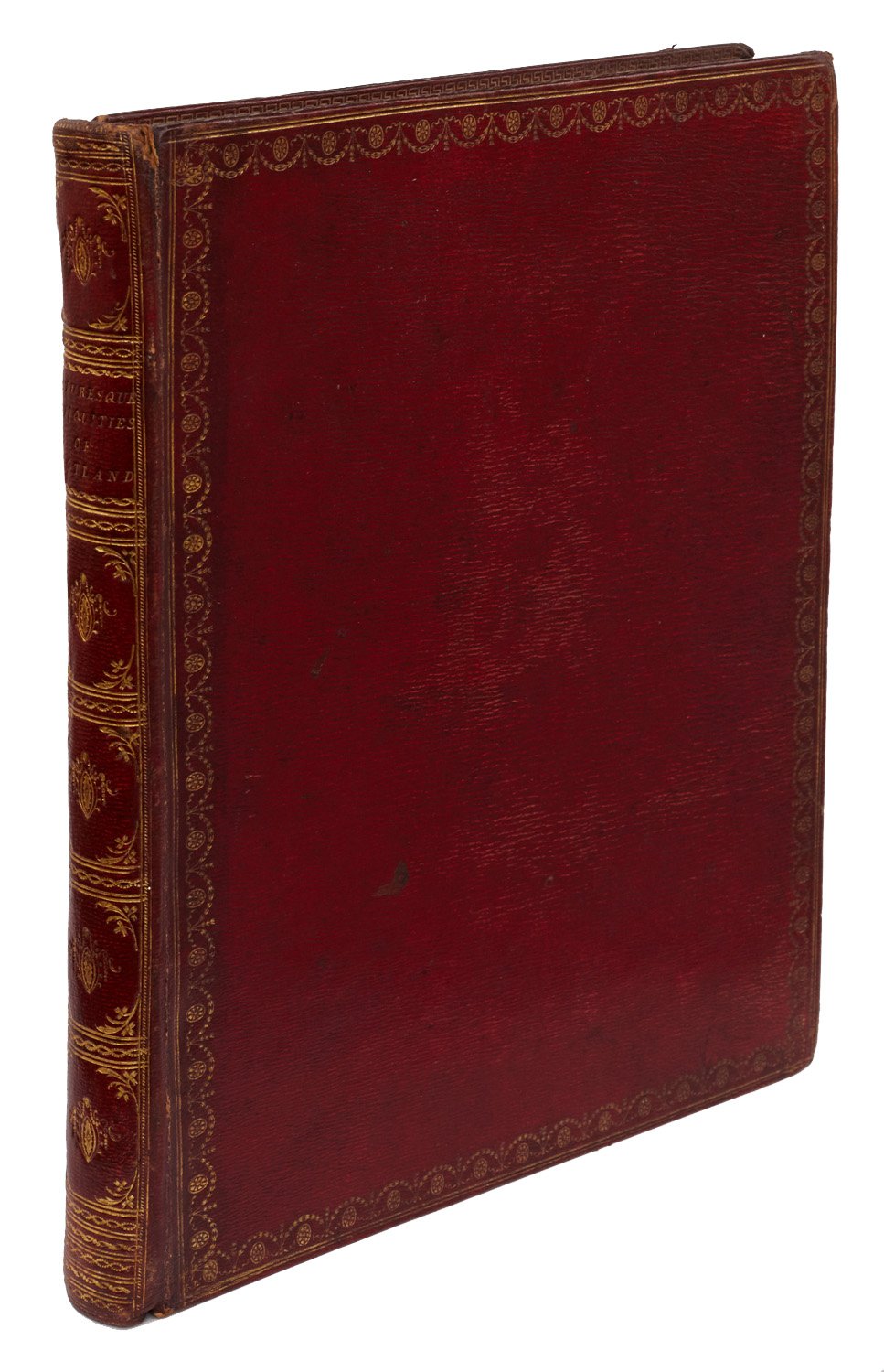



WITH A MANUSCRIPT DESIGN FOR A SUNDIAL
TALIANI, Giuseppe.
Orologi riflessi, per mezo di un picciolo specchio parallelo o perpendicolare all’orizonte.
Macerata, Filippo Camacci, 1648.
4to, pp. [viii], 48; title printed in red and black with large woodcut arms of Cardinal Cenci, multiple woodcut diagrams in text (of which two almost full-page) representing the computation of time with several methods, typographic zodiac tables, typographic headpiece and woodcut initials; additional full-page contemporary hand-drawn diagram on paper representing the face of a sundial (somewhat wormed, and laid down at an early stage); some light marginal dampstaining, last two leaves a little wormed and neatly repaired (mostly in the lower margin with no loss of legibility); modern half vellum with carta rustica sides; ink ownership inscription of Antonia Galleppini to verso of final leaf.

Added to your basket:
Orologi riflessi, per mezo di un picciolo specchio parallelo o perpendicolare all’orizonte.
Only recorded edition, rare, of this work by mathematician Taliani on the construction of sundials in the interior of buildings, to be achieved through mirrors reflecting solar rays – our copy uniquely furnished with a contemporary large hand-drawn representation of the face of a sundial. Giovanni Battista Benedetti of Imola (1530–1590), pioneer of Italian mathematical humanism, had first applied reflection to sundials. Taliani, a true child of the Galilean and experimental era, develops the notion of exploiting the most refined geometry and applying it to material construction, taking great care in the visual representation of his solutions.
Both the bibliography of Houzeau and Lancaster and that of Riccardi are likely mistaken in citing two other editions: 1635 and 1684, since this is the only edition to be found in library records. Houzeau and Lancaster 11445; Riccardi I (ii) 482; Piantanida 1685.

